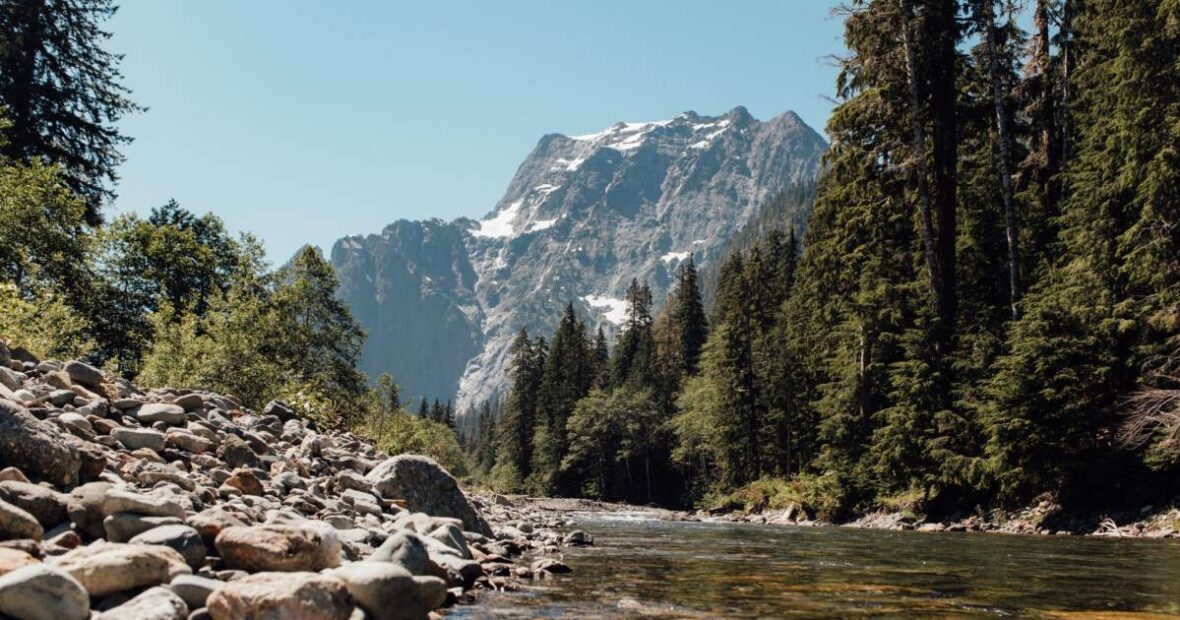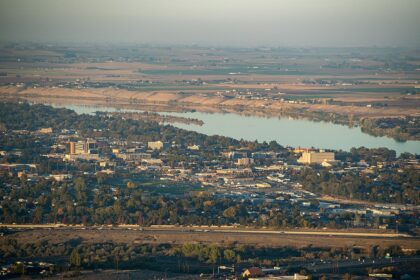Granite Falls is a city in Snohomish County, Washington, United States. It is located between the Pilchuck and Stillaguamish rivers in the western foothills of the Cascade Range, northeast of Lake Stevens and Marysville. Take a look below for 30 amazing and fascinating facts about Granite Falls, Washington, United States.
1. The city is named for a waterfall north of downtown on the Stillagumish River, also accessible via the Mountain Loop Highway.
2. It had a population of 3,364 at the 2010 census.
3. The site of Granite Falls was originally a portage for local Coast Salish tribes prior to the arrival of American settlers.
4. The settlement was founded in 1883 and prospered after the discovery of gold and silver in the Monte Cristo mines located east of Granite Falls on the Everett and Monte Cristo Railway.
5. Granite Falls was platted in 1891 and incorporated as a fourth-class town on November 8, 1903.
6. The Pilchuck River and Upper Stillaguamish basin was historically inhabited by the Skykomish people, who used the modern-day site of Granite Falls as a portage along with other Coast Salish tribes.
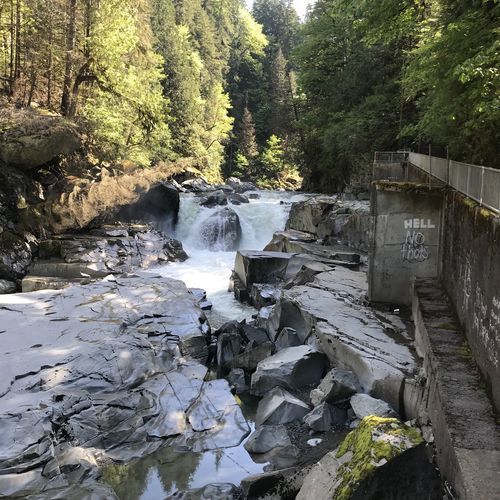
7. Several Skykomish archaeological sites were discovered in the 1970s between modern-day Granite Falls and Lochsloy, with over 700 artifacts recovered from later excavation.
8. The first permanent European settler was Joseph Sous Enas, who staked a homestead claim in 1883 on land south of the present city. The townsite was platted in 1891, following the construction of a post office and general store.
9. The Everett and Monte Cristo Railway reached Granite Falls on October 16, 1892, building a station for the town on the route between the mining area of Monte Cristo (now a ghost town) and the county seat of Everett. The city was officially incorporated on December 21, 1903.
10. He was quickly followed by other homesteaders, benefiting from “the Big Burn”, a forest fire that cleared the heavily forested land and made it easier for settlers to stake claims.
11. By 1896, there were enough residents to petition the state of a school district (Granite Falls District #1).
12. The discovery of gold and other minerals in 1889 in the Cascade Mountains east of Granite Falls was a boon to Granite Falls. Mines needed a railroad and the settlers of Granite Falls stepped up to provide railroad ties cut from the nearby forests, supplies for fortune seeking miners, a doctor, and other necessities. In 1890, a post office was opened and the first commercial establishments opened on what is now South Granite Ave and Pioneer.
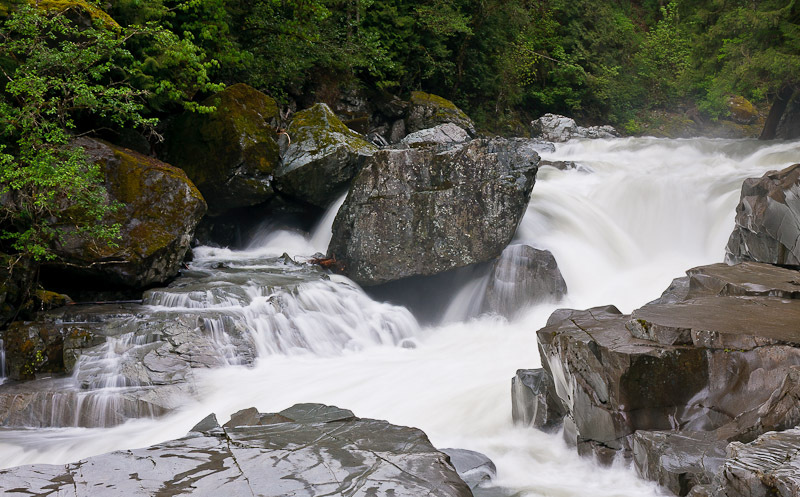
13. The Everett and Monte Cristo Railway came to town in 1892 from its start in Hartford, Washington (near today’s Lake Stevens) and through to its terminus at Monte Cristo. Partially funded by John D. Rockefeller and others, the train carried supplies, passengers, and ore up and down the Stilly Valley.
14. The Granite Falls townsite was platted in 1891 from portions of the Wright and Anderson homesteads and on November 8, 1903, Granite Falls was incorporated as a fourth-class city. Electricity, sewers, sidewalks, telephones, cars, and all the amenities of modern life soon followed.
15. By World War I, the once bustling mining towns of Monte Cristo and Silverton were no longer shipping out ore. The railroad, now owned by Northern Pacific, stopped running and the tracks were torn out in the early 1930s to make way for the Mountain Loop Highway.
16. Granite Falls between the world wars was a lumber town; logging companies felled trees, sawmills created lumber and shingle mills created shingles. The Great Depression, however, took its toll.
17. By 1935, the population of Granite Falls was half what it was in 1925. Mills closed and people left to find work elsewhere. On April 26, 1933, a fire destroyed the Cascade Hotel in downtown Granite Falls and threatened other buildings. The historic hotel was rebuilt at the same site.
18. At the end of World War II, things looked bleak. The opening of Miller Shingle in 1946 (now the country’s largest specialty lumber mill) meant jobs both in the woods and at the mill. Construction booms through Snohomish and King counties also meant jobs at the gravel pits dotted around Granite Falls.
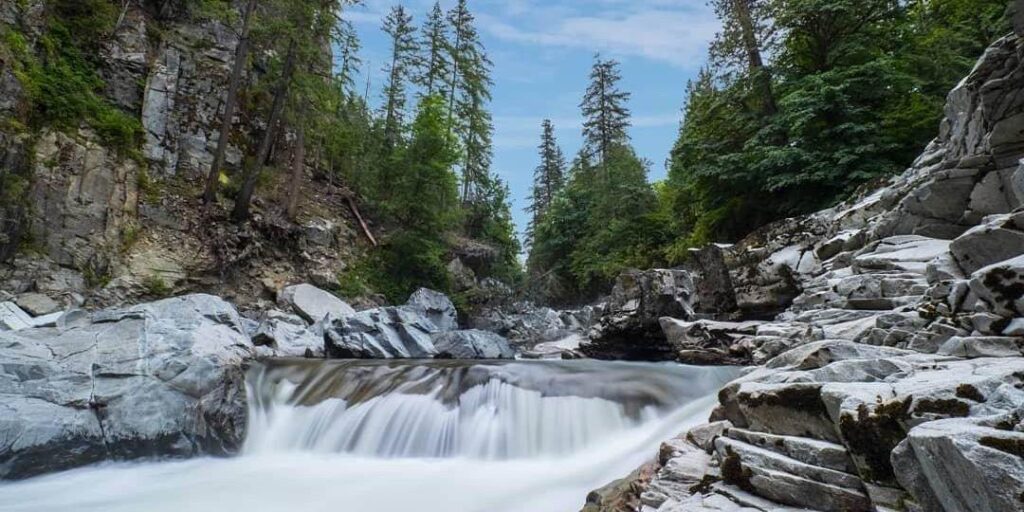
19. The city later became a bedroom community for commuters working in Everett and Lake Stevens for large companies.
20. Hard times would come again. In 1986, the United States Forest Service severely limited logging in old-growth forests under its protection in an effort to save the northern spotted owl from extinction. In June, 1990, the U.S. Fish and Wildlife Department declared the spotted owl an endangered species, and in 1991, a federal court judge ruled the Forest Service’s logging plan to save the owl was inadequate. Over one-fourth of old-growth forest on both public and private land were put off-limits to logging.
21. In the 21st century, Granite Falls has focused on attracting visitors to the natural environment and recreational opportunities along the Mt. Loop Highway.
22. Expanded housing development has brought an increased population of families who commute to Everett, Seattle, and the Eastside to work. In 2001, the Tsubaki Grand Shrine of America was given a 17-acre (7 ha) plot of land next to Kannagara Jinja (built by the Reverend of the shrine) in Granite Falls, which was built upon, combining the two places.
23. A truck bypass around the north side of downtown Granite Falls opened in 2010 to serve several quarries to the northeast. A new high school campus was built near the bypass, along with a housing development with 327 homes in the late 2010s.
24. A downtown revitalization project began in the 2000s with renovations to buildings and a small city park. A new civic center is planned along South Granite Avenue, including a city hall that opened in 2019, a public plaza, a community center, and a gymnasium for the Boys & Girls Club that will also serve as an emergency shelter.
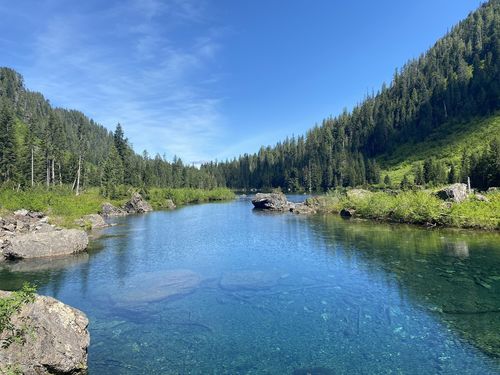
25. The city government has also proposed promoting Granite Falls as a location for outdoor recreation retailers and businesses.
26. Granite Falls has several annual community events, the largest of which is Railroad Days in early October. The Railroad Days festival was established in 1965 by a schoolteacher and celebrates the city’s local history. It attracts about 5,000 visitors and includes a parade, a street fair, carnival rides, and tours.
27. The city’s historical society opened its museum in October 2007 at a two-story building with 30,000 square feet (2,800 m2) of space. The museum launched a digitization project in 2016, using volunteer labor to preserve photographs and newspaper records.
28. The Granite Falls area has been home to several renowned artists, including Kenneth Callahan and Guy Anderson in the 1940s and 1950s.
29. Granite Falls is located near recreational areas along the Mountain Loop Highway in the Mount Baker–Snoqualmie National Forest, including sites for hiking, camping, and fishing.
30. Among the major attractions on the Mountain Loop Highway are the ghost town of Monte Cristo and the Big Four Ice Caves.

